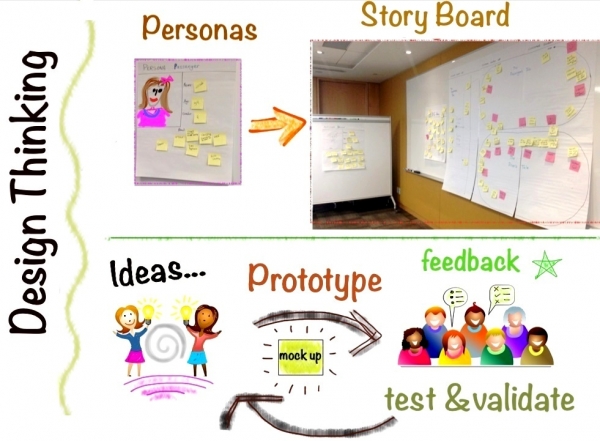


We live in a complex world that is full of constraints and continuously shifting needs.
There are many things in our organizations and marketplace that we can’t control. When it comes to solving problems, our previously generated explanation doesn’t always apply. We can’t draw rules of thumb. We are required to think in new ways all the time.
Design thinking framework solves this challenge.
Design thinking is a creative way of solving ill-defined problems with empathy framework and cyclic experimental approach.
Design thinking framework converts constraints into creativity and it makes us look at problems with new eyes. Design thinking provides futuristic innovation as an answer to wicked problems. Design thinking is very different from the traditional linear/analytical approaches of solving problems.
Tim Brown, the CEO of the Palo Alto-based design and innovation firm IDEO, sited a great example of innovation with design thinking in his interview with Forbes magazine.
“It’s fine to do a focus group and ask people what they want, but generally they haven’t solved their problems, so they can’t tell you. Value comes from looking first-hand at what people do, understanding what they need and are trying to accomplish and using that knowledge as inspiration for developing new ideas. For example, look at Bank of America’s Keep the Change Program. People couldn’t tell us that they wanted a debit card that would “keep the change.” It didn’t occur to them. But we saw how many people were rounding up to the next dollar when they paid for things–yet doing so didn’t create value for them. Combining that habit with a debit card created a completely automatic, invisible way to save, which is something people really want to do now. As a result, Bank of America has gotten 10 million new customers and $1.8 billion in savings for them. And it is such good business for the bank that it is sharing the wealth, matching the first $400 in each new savings account.”
Here is a high level framework of design thinking.
Setup a creative work environment where people freely share ideas and thoughts without being influenced by political-dynamics, passing on judgement and can stay focused on topic.
Personas are fictional characters created to represent user types. They are useful in considering the goals, desires and limitations of the users to help guide design decisions. Personas put a personal human face on otherwise abstract data about customers and help us to feel the empathy for the user/customer.
Your persona description might include:
Sodales’s team is formally certified in Design Thinking methodology. The core of Sodales Solutions Inc. services is to solve our clients’ critical business problems. However, before solving a problem , we need to find what the real problem is—as it is quite easy and common to confuse a problem with its symptoms.
And we do this by using “Design Thinking” framework.
Curious to learn more? Email me at sana.salam@sodalessolutions.com and get started.